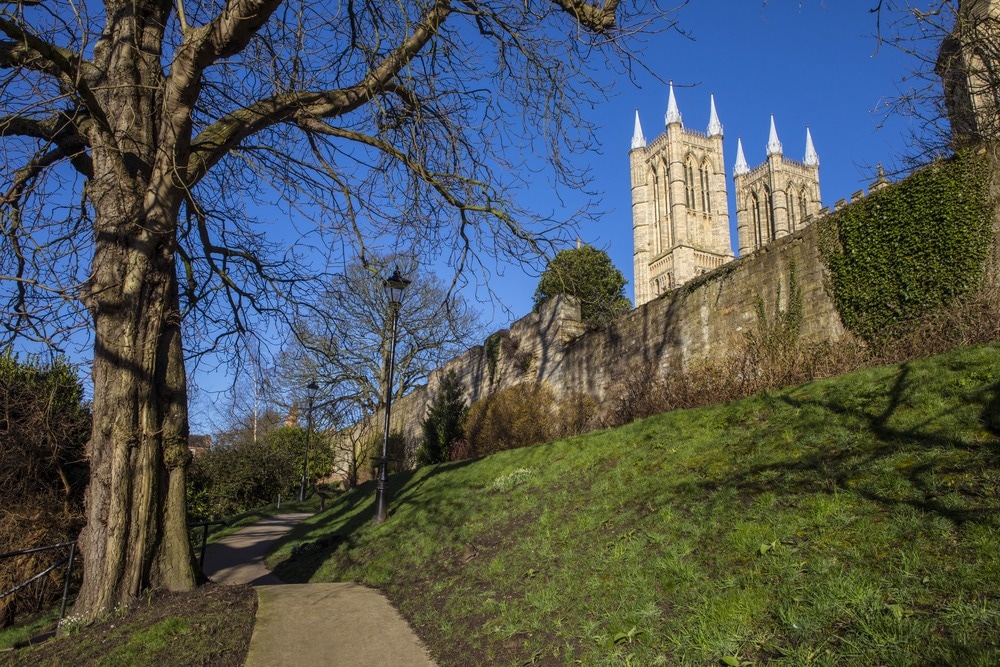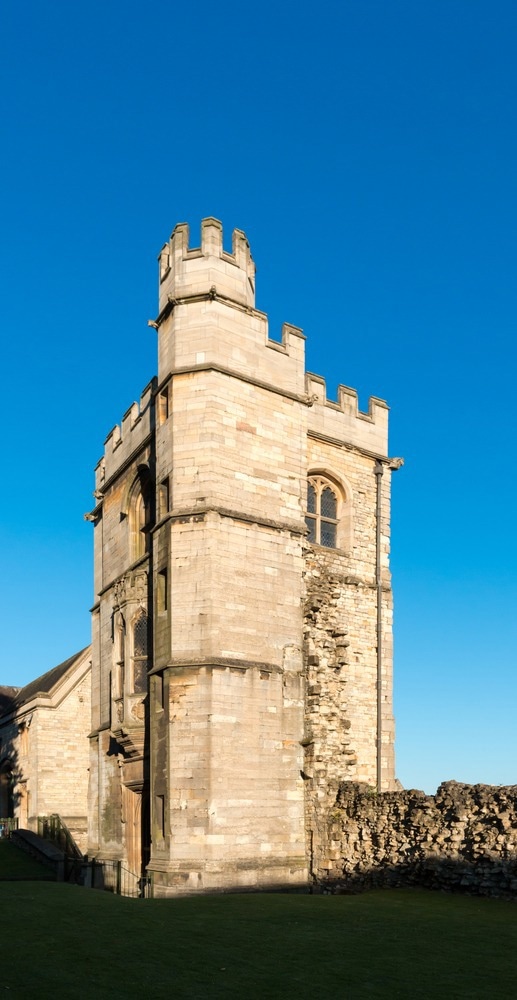English Heritage is currently conducting a £2.5 million project to preserve Lincoln Medieval Bishops’ Palace. Once completed, the project will conserve this historic building for future generations.

Image Credit: chrisdorney/Shutterstock.com
The Site’s Significance
Constructed in 1163, the Bishops’ Palace is regarded as one of the finest and most important medieval buildings in the British Isles. Built as the residence of the Bishop of Lincoln, the palace would serve as the seat of ecumenical power for the largest diocese in Medieval England, which stretched from the Thames to the Humber.
Occupied from the 12th to the 17th Centuries, the palace’s architectural grandeur reflected its important status in canonical life in medieval English life.
During the English Civil War, the site was irrevocably damaged after being set on fire and sacked. The mid-18th century saw a new Bishops’ Palace built on the abandoned ruins’ foundations, which still stands today.
Whilst now physically a shadow of its former grandiosity, the building’s important status as a seat of church power in the medieval era requires its preservation for future generations.
The Palace’s Impressive Surviving Architectural Elements
One of its most impressive surviving features is the fine undercrofted East Hall, built in 1230 under the instructions of Bishop St Hugh. The entrance tower and chapel range, which were built in the 1430s to modernize the palace by Bishop Alnwick, are also still standing.
The palace was constructed from limestone in the gothic style, which was typical of medieval religious buildings in Europe.
Previous Restoration Attempts
Previous restorations have been attempted at the site with little long-term success. A major attempt was made in the 1950s using cement-based mortar. Whilst this material was strong, its hardness and imperviousness to water ingress caused the historic masonry to bear the brunt of any environmental damage.
The attempted restoration in the 1950s caused more problems than it solved, unfortunately. Clearly, a better and more sympathetic approach was necessary to conserve Lincoln’s Medieval Bishops’ Palace.
English Heritage’s Restoration Project
A number of key concerns persist with the site’s restoration, namely the lack of a protective roof on the structure, exposed location, and vegetation growth. Plant roots damage the masonry by growing through the mortar joints. Trapped water can freeze during the winter months, causing the stone to fracture.
To preserve the ruins, English Heritage has been restoring the site since 2021, with the palace closed to visitors in order to conduct necessary work. A main difference between this restoration and previous attempts in the 1950s is the use of traditional lime-based mortar, which is soft and can take the brunt of damage and decay.
Different stone and mortar samples were assessed by the team to ensure that they meet project needs. Where masonry is damaged beyond repair, matching materials will be used.

Image Credit: jremes84/Shutterstock.com
Much of the work takes a proactive approach rather than a reactive one, ensuring any further damage should be minimal. One approach to preventing water ingress and future damage used by the team is to ‘cap’ the wall heads with either turf (soft capping) or a solid barrier (hard capping).
Both capping methods are used in different areas of the structure to maximize their benefits. Once the masonry is repaired, an extensive de-vegetation program will be carried out.
An initial 3D survey was conducted in 2021 using laser scanners. This survey produced an accurate computer model of the site. Precise measurements from the initial survey allow the team to monitor small changes over long periods of time, identifying any critical areas which need attention.
Combining photographic surveys with computer-generated 3D data allows the team to create accurate models which reflect the real-world features and conditions on-site.
By utilizing cutting-edge technologies and traditional, sympathetic architectural techniques, the team hopes to halt the site’s historic stonework, stabilize the site, and repair it so that future generations can continue to enjoy this historic medieval building.
More from AZoBuild: Discussing Construction Heritage and Preservation with Dr. Silke Langenberg
Further Reading
English Heritage (website) Conserving a Medieval Palace [online] Available at:
https://www.english-heritage.org.uk/visit/places/lincoln-medieval-bishops-palace/conserving-lincoln-medieval-bishops-palace
Disclaimer: The views expressed here are those of the author expressed in their private capacity and do not necessarily represent the views of AZoM.com Limited T/A AZoNetwork the owner and operator of this website. This disclaimer forms part of the Terms and conditions of use of this website.